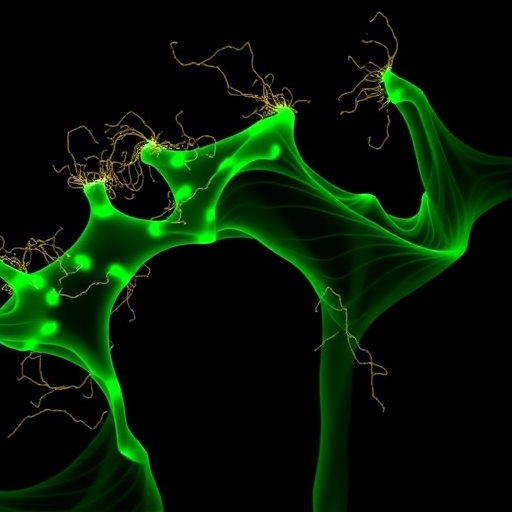In a groundbreaking study published in BMC Genomics, researchers Mohammed Shujaat and S. Q. Mao presented an innovative approach to characterizing archaeal promoters by leveraging cutting-edge explainable artificial intelligence techniques. This research marks a significant milestone in genomics, shedding light on the complexities of archaeal gene regulation. The ability to decipher the underlying mechanisms of archaeal transcriptional control has profound implications, not only for understanding archaeal biology but also for potential biotechnological applications.
Archaea, a domain of single-celled microorganisms, play critical roles in various ecological processes and biogeochemical cycles. They are known for thriving in some of the most extreme environments on Earth, yet their genetic systems and regulatory mechanisms have been relatively understudied compared to bacteria and eukaryotes. This research aims to bridge that knowledge gap by focusing on the elusive nature of archaeal promoters, the DNA sequences that initiate the transcription of genes.
The study introduces an explainable convolutional neural network (CNN) model designed specifically to analyze archaeal promoter sequences. Machine learning has become increasingly valuable in genomics, providing tools that can sift through vast amounts of biological data to identify patterns that are often invisible to traditional methods. The use of a CNN model is particularly apt for this task, given its prowess in recognizing spatial hierarchies in data, which is essential for understanding complex nucleotide arrangements in DNA sequences.
One of the key innovations of this research is the explainability aspect, which allows scientists to not only obtain predictions about promoter regions but also understand the reasoning behind those predictions. This transparency is crucial, especially in biological research, where understanding the ‘why’ behind a model’s output can lead to deeper insights and validation of biological hypotheses. The researchers systematically evaluated the CNN’s interpretations, providing a framework that aligns well with biological domain knowledge.
Through rigorous experimentation, the authors successfully demonstrated that their CNN model could accurately identify known archaeal promoters, achieving high sensitivity and specificity. This capability paves the way for discovering previously unidentified promoter sequences within archaeal genomes that could play significant roles in regulating gene expression. By analyzing these sequences, scientists can begin to build a more comprehensive picture of archaeal transcriptional machinery.
The implications of understanding archaeal promoters extend into various fields, including biotechnology and bioengineering. As archaea are increasingly being harnessed for biotechnological applications, such as methane production, bioremediation, and enzyme engineering, insights into their gene regulation could enhance these processes. For instance, precisely controlling gene expression in these organisms could lead to improved yields in biofuel production or enhanced efficiency in environmental cleanup strategies.
Moreover, the methodology established by Shujaat and Mao can serve as a template for future studies focusing on other less explored areas of genomics. The adaptability of the explainable CNN model exemplifies how artificial intelligence can be tailored to meet the unique challenges posed by different organisms across the tree of life. This sets a precedent for interdisciplinary collaboration between computational scientists and molecular biologists, leading to innovations that transcend traditional boundaries.
As researchers continue to investigate the genetic and metabolic pathways of extremophiles, the insights gained from characterizing archaeal promoters will contribute to a deeper understanding of evolutionary adaptations. Archaea are thought to possess unique transcriptional strategies that may provide clues to the evolutionary history of life on Earth. The ability to manipulate and study these transcriptional systems could also enhance our understanding of early life forms and the origins of cellular complexity.
Additionally, with the rapid advancement of genomic technologies, the integration of machine learning approaches is becoming more prevalent. The comprehensive dataset generated from archaeal genome sequencing combined with advanced computational models can facilitate the exploration of intricate genetic landscapes. The authors advocate for an era where machine learning becomes standard in the interpretation of complex genomics data, leading to faster, more accurate biological discoveries.
Surprisingly, the significance of this research extends beyond the confines of molecular biology. It challenges our understanding of biological systems by emphasizing the role of promoters in cellular life. Rather than merely being passive elements of the genome, promoters are active participants in the communication network of the cell, influencing how organisms respond to environmental changes. This broader perspective aligns with the modern view of genomics as a dynamic process rather than a static blueprint.
In conclusion, the work by Shujaat and Mao represents a substantial contribution to both the field of archaeal genomics and the application of artificial intelligence in biological research. Their explainable CNN model not only provides a powerful tool for identifying archaeal promoters but also highlights the importance of transparency in computational biology. As the body of knowledge regarding archaeal gene regulation continues to grow, the implications of these findings will likely resonate across various scientific domains, potentially unlocking new avenues for research and application. The collaborative interplay between artificial intelligence and biological discovery is poised to usher in a new era of innovative research and understanding of life at its most primitive forms.
Subject of Research: Characterization of archaeal promoters using explainable and web-based CNN model.
Article Title: Characterization of archaeal promoters using explainable and web-based CNN model.
Article References: Shujaat, M., Mao, SQ. Characterization of archaeal promoters using explainable and web-based CNN model. BMC Genomics 26, 936 (2025). https://doi.org/10.1186/s12864-025-12121-8
Image Credits: AI Generated
DOI: 10.1186/s12864-025-12121-8
Keywords: Archaeal promoters, machine learning, convolutional neural network, explainable AI, genomics.




